The Art And Science Of Precision Cutting Tools
Machine tools become faster and more stable while cutting tools get tougher, longer lasting and geometrically more complex. I visited a premier German cutting tool manufacturer to look at the state of the art of making carbide cutting tools that complement today’s machine tool technology.
My first contact with Horn USA was around 1998. I had seen the company’s distinctive yellow displays at various European trade shows through the years and was happy to hear they planned to set up shop in Franklin, Tennessee, that year.
Interested in the Horn story, I tracked down Duane Drape, national sales manager, who was helping set up distribution and some of the other myriad details associated with opening a foreign office. At that time, he was working from his home in Michigan. Later that year, Horn USA made its official debut at IMTS ‘98 and has never looked back.
In 2001, the Franklin operation grew from a sales and distribution office to a manufacturing plant for the inch standard tool product line. I have visited this factory several times, but always hoped to have the opportunity to see the “mother ship” in Tübingen, Germany. Last December, I finally got my chance.
I arrived on a Sunday afternoon from Frankfurt after taking a nice train ride into Stuttgart. Tübingen is a 45-minute car ride from Stuttgart. We checked into the hotel, a charming old-world building with no two rooms the same and a view of the castle gate. It’s more of an inn than a hotel, as it is very comfortable.
Duane and I hooked up for a quick walk through the old city, medieval and lovely, ending up at a restaurant along the town’s river for wieners and beer. It was a perfect afternoon snack. That evening, we had dinner with Andreas Vollmer, who is responsible for Horn’s export business. It was nice to see Andreas again. The next morning, we would begin working, but this evening was social.
Keeping Ahead Of The Curve
Horn started business in 1969 specializing in grooving tools for piston production. Being close to the automotive industry in Stuttgart makes the Tübingen location ideal for serving this market segment. According to Andreas, the company quickly established a good reputation for technology and consistency and began to grow its product offering.
Horn has managed to stay under the radar screen of many larger competitors by positioning themselves more as a custom tool manufacturer rather than an off-the-shelf commodity vendor. “Our average batch run is about 70 pieces,” Andreas says. “At those volumes, we need to be smart about manufacturing our cutters as well as designing specific customer solutions.”
To this end, the company uses a two-prong strategy for its product development. In addition to developing new grades, coatings and geometries for its carbide inserts and solid carbide tools, the company works hard at its manufacturing capability as well.
How To Cook An Insert
The indexable insert is a remarkable piece of technology. Out of an apparently simple composite primarily made from two components—a binder and “powder”—comes a variety of grades, shapes, sizes and performance characteristics that help metalworking manufacturers get the most from their processes.
Often compared to baking a cake, the recipe for manufacturing indexable carbide inserts that deliver the desired performance characteristics is a function of the ratios among base components. In its simplest form, to increase an insert’s toughness (its resistance to fracture), the binder content-to-powder ratio is raised. To create a harder cutting material, the ratio is lowered, with more powder and less binder, which makes the cutter more brittle. The many grades of carbide substrates reflect a sliding scale between the extremes of toughness and hardness, which are matched to a given application.
Mixing the binder and powder is a critical step in the manufacture of indexable insert tools. Like a “heat” in steel production, each batch of the recipe for a given base grade is carefully controlled for consistency.
After mixing, the “batter” is pressed into a shape. The pressing process uses insert molds to impart the insert shape and some of the geometry, such as chipbreakers, onto the now “green” insert.
In addition to the conventional pressing technology used by most insert producers, Horn has successfully developed a method of injection molding inserts as well. “What this gives us is the ability to mold complex inserts much closer to a final shape and complete forms that would be almost impossible by conventional technology,” Andreas says. “This, in turn, reduces the amount of grinding required to achieve a finished geometry and speeds our throughput.”
The details of this process are proprietary, but consist basically of adding a compound to the binder/powder mix so it can flow under pressure through gates into a closed mold cavity. This flowable material is also extruded into tooling blanks that become the basis for some of the company’s solid carbide products. In the next manufacturing step, which is sintering, this additional compound vaporizes leaving no trace in the final insert grade.
Sintering is the last processing step before a green insert blank becomes the rugged carbide substrate that shops are familiar with. Using the cake-baking analogy, this step represents the oven. Under a vacuum at high temperature, the green insert is heated until the binder plasticizes, enabling it to flow around the grains of powder filling the voids. Upon cooling, the binder and grains are chemically and physically linked into a uniform matrix.
On The Shop Floor
Out of the oven, the inserts are ready to be machined to their final shapes, geometry and precision. Andreas says, “We recognized early on the need to rationalize our insert edge preparation grinding process. Our shop can generate 75,000 different special tools, and most are in lot sizes of ten. We had to figure out how to grind our inserts accurately and efficiently to accommodate our high-mix, lower-volume production schedules.”
The shop floor reflects this rationalization concept. The grinding department is arranged in rows of autonomous cells. Four of these cells are operated by one person. Each cell is built around a DMG milling machine converted to grind inserts. In the machine spindle, an arbor is used to hold various superabrasive wheels and brushes allowing all of the grinding operations to be performed in sequence without changing wheels.
An automated load/unload system, designed by Horn, feeds the machine tools. As a finished insert is removed from the work zone, it passes through a laser gaging system that checks critical dimensions. This cellular concept is duplicated at the company’s operation in Franklin, Tennessee.
While the cells are not dedicated to a specific cutting tool product, they are tooled to accommodate like families of inserts. “We have several types of cells to accommodate various insert parameters,” Andreas explains. “Our production schedule is made up to run similar jobs sequentially, which simplifies change-over from one insert to another. Generally, only the material handling devices and gaging units need to be physically adjusted.”
Horn also does much of its own insert coating. It uses a PVD (physical vapor deposit) system. Inserts to be coated are first cleaned in an automated (no-touch) batch washing system. The clean inserts are assembled into racks for placement in the coating chamber. Three different coatings can be used individually or layered.
Planning For The Future
While the manufacturing system for insert production is proven, Horn continues to develop new process technologies for precision parts making. The company is in the process of proving out new machine tool and automation cells, off-line, for eventual use on the shop floor. Keeping ahead of the curve is an ongoing process.
Related Content
Tool Path Improves Chip Management for Swiss-Type Lathes
This simple change to a Swiss-type turning machine’s tool path can dramatically improve its ability to manage chips.
Read MoreThe Ins and Outs of Inserts
Understanding how inserts are made provides valuable insight into how their performance can be optimized.
Read MoreProducing Micro Screws for the Watch Industry
Cutting tools play a key role in machining tiny screws on Swiss-type lathes for this Switzerland-based watch manufacturer.
Read MoreReplaceable-Insert Spade Drill Basics, Advantages
Although solid carbide and indexable-insert drills have their place in a machine shop, replaceable-insert spade drills offer specific advantages for various holemaking operations on machining centers and lathes.
Read MoreRead Next
Broaching On A Lathe
Producing a keyway, spline or similar longitudinal feature on a turned part usually necessitates an additional, time-consuming, secondary operation on a broaching or slotting machine. That means moving the part to and from a secondary operation, an extra setup, additional labor and hourly machine costs and all of the other headaches that go with secondary operations.
Read MoreDo You Have Single Points of Failure?
Plans need to be in place before a catastrophic event occurs.
Read MoreA Tooling Workshop Worth a Visit
Marubeni Citizen-Cincom’s tooling and accessory workshop offers a chance to learn more about ancillary devices that can boost machining efficiency and capability.
Read More





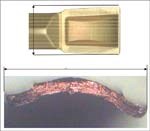
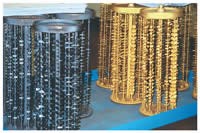
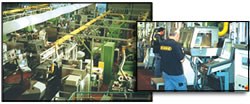
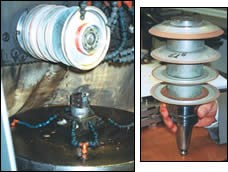
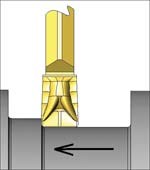

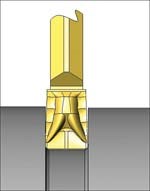







.png;maxWidth=300;quality=90)










